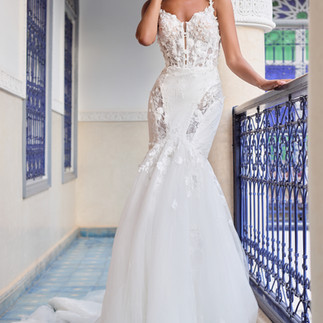Understanding wedding dress fabrics
- Ellie At Olivers Bridal & Formalwear

- Apr 6, 2023
- 2 min read
Updated: Apr 7, 2023
So before you start wedding dress shopping here’s what to expect with the different types of bridal fabrics you’ll come across
Crepe
Is a fabric that works best with soft silhouettes. The shapely material can be great for accentuating curves but also works well in stark, minimalist designs. Simple styles like mermaid or a-line classic choices for this fabric, and it's a sophisticated textile that works year-round.
Chiffon
One of the lighter fabrics, chiffon has a real floaty and ethereal vibe and perfect for the bohemian bride. Its light and airy structure also makes it a great option for abroad weddings.
Lace
The most popular wedding dress fabric is still lace. As a fabric category, it is extremely diverse in pattern, texture, weight, and embellishments. Lace is delicate, feminine, and romantic, and supple enough to work well in every shape.
Mikado
Mikado is a heavier type of silk with either a shiny and matte finish that has gained immense popularity. Its texture provides a structure that has the ability to be molded and multi-seamed from a sexy, narrow mermaid to a strapless ballgowns" that fit perfectly. It’s a material can be worn year-round.
Satin
Satin was the fabric of choice for most brides over the decades The beauty of satin is how it drapes. Silk satin is one of the more traditional wedding dress fabrics. It’s a durable fabric that has a weight that's suitable for all seasons. The material can be very supportive and lends itself to constructed designs like ruched or ballgown styles.
Tulle
Has an airy vibe but can be ruched to build structure. This bridal fabric has seen quite a rise in popularity with sexy illusion styles, barely there sleeves, plunging necklines or cutouts. The lightweight fabric can also be used in lace designs and can be worn year-round.
































Comments